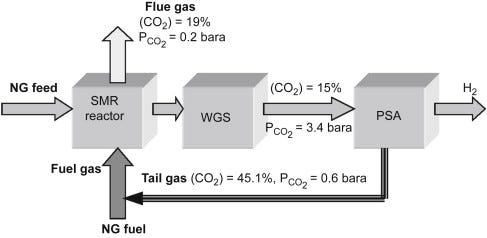Hydrogen: today's investment, tomorrow's solution
Environmentalists love to hate on H2 for being "unproven" or "a ploy to keep pumping oil", but they're not thinking far enough ahead. Luckily, NM's leadership is..

Despite being snubbed for the Hydrogen Hub funding, Governor Michelle Lujan Grisham has brought hydrogen to new heights in New Mexico. The Governor and her cabinet keep attracting hydrogen companies to the state amidst fans and critics of the alternative fuel.
Environmentalists are seemingly divided on hydrogen. Some climate groups argue that hydrogen is too underdeveloped to be used as a legitimate fuel source in the near term. Which is true. Some argue it is a ploy for oil and gas companies to stay relevant. Which is only partly true. Environmentalists like Governor Michelle Lujan-Grisham seem to view hydrogen for what it is - a technology that will someday replace oil and gas in those hard-to-decarbonize industries.
Hydrogen fuel development has a ways to go, but it won’t get there unless we invest in its development. Clean H2 isn’t a reason to not massively invest in renewable energy, but it will play an important role in society - especially as we get to the last few percentage points of decarbonization that will prove to be the hardest to achieve. Hydrogen can do things that solar, wind, and lithium batteries can’t, and as we decarbonize, we’re going to need all the help we can get to ween ourselves off of oil and gas.
Today’s post is about hydrogen, what it’s going to be used for, and why some far-left environmentalists are too worried about it.
First, let’s start with what hydrogen is.
Hydrogen is the first element on the periodic table. It has the simplest atomic structure out of all of the elements - making it the lightest element on the periodic table. It is also the most abundant element in the universe, and it can form bonds with nearly all other elements. Because of this, you rarely find it existing alone - it is commonly found in the form of water (H2O), methane (CH4), and other hydrocarbons.
Hydrogen bonds are considered weak, making the hydrogen possible to extract via mechanical or chemical processes. Today, most hydrogen fuel producers extract hydrogen from methane or water using the following methods:
Steam methane reforming:
In oversimplified terms, steam methane reforming (SMR) is a process in which methane from natural gas is heated using a catalyst to separate the hydrogen from the carbon. This results in hydrogen and CO2. The CO2 is either released into the atmosphere or captured using carbon-capture technology - which is unscalable and under-developed at the moment.
Most hydrogen is produced using SMR today. If the carbon is captured, it’s called ‘blue hydrogen,’ if the carbon is released into the atmosphere, it’s called ‘grey hydrogen.’
Once carbon capture technology is further developed, blue hydrogen will be great to have, but it will still be second to ‘green hydrogen’ - made using a process called…
Electrolysis:
Electrolysis is the process of extracting H2 from H2O using electrical currents. When renewable energy like solar or wind is used as the power source, this is called ‘green hydrogen.’ There are zero greenhouse gas emissions used in the green hydrogen production process.
When the grid is used to power an electrolyzer, it is called ‘yellow hydrogen,’ and this process is only as carbon-intensive as the grid it’s being powered by.
Electrolysis is the holy grail of hydrogen production. If we can make this process cheap, and be resourceful about the water that goes into the process (which arid states like New Mexico can totally do by the way), we can tap into a virtually limitless energy supply.
There are many more types of hydrogen than what I mentioned in this article. For a more thorough description of the full ‘hydrogen color spectrum’, check out this article by nationalgrid.com. People are making hydrogen using nuclear energy, biomass, and more.
While there is very little ‘green’ hydrogen being produced today, federal and state investments into the industry expect to expand our ability to produce more green hydrogen in the future. You’ve likely heard something about the ‘Hydrogen Hub’ funding that was recently granted thanks to Biden’s Bipartisan Infrastructure Law.
This is the first thing some environmentalists keep getting caught up on - most hydrogen produced today is grey or blue hydrogen, which relies on continued oil and gas extraction. If this were going to be the case forever, hydrogen would not be a good investment, but that’s not the case.
Green hydrogen is projected to be a $1.7 trillion/year industry by 2050 as renewable energy and electrolysis become more affordable and scalable. Furthermore, our grid will continue to decarbonize, and carbon capture technologies will continue to become cheaper, and more scalable. Between green, yellow, and blue hydrogen, we’re projected to have a lot of low to no-carbon hydrogen fuel in production:
Ok, but do we actually need hydrogen?
Yes. In fact, we need to produce eight times more hydrogen than we currently are if we want to reach net zero by 2050, and we need to produce it with the clean technologies we talked about above. Without hydrogen, we probably can’t decarbonize many hard-to-decarbonize sectors within our economy.
Let’s talk about a few of those hard-to-decarbonize sectors.
First, there’s electricity production. The wind doesn’t always blow, and the sun doesn’t always shine. In order to fill those renewable energy gaps in energy production and storage, we’ll have to rely on large batteries, nuclear energy, hydrogen fuel, and more. Of course, we should continue to deploy enough wind and solar to satisfy our economy’s ever-growing energy demand, but we need to be real about the limitations of using renewables alone to power our grid.
Second, there’s heavy-duty transportation. While electric-powered cars are going to transport everyday consumers like you and me to and from work, hydrogen is going to power the big trucks, ships, and tractors that power our economy.
All of the major car manufacturers are building electric vehicles at scale, and states like California and New Mexico are mandating the mass adoption of EV technologies for everyday consumers. Hydrogen-powered cars make less sense for the average consumer because the fuel is hard to transport and store, but hydrogen-powered cars are still available in some areas for regular consumers.
For semi trucks, tractors, concrete trucks, and the like, lithium batteries are less logical than hydrogen fuel cells. Because hydrogen is so energy-dense and light, it makes a lot of sense for big vehicles to use hydrogen instead of heavy, less-energy-dense lithium-ion batteries.
Third, there’s manufacturing. Goods like concrete and steel are produced using super energy-intensive processes that are hard to replace with wind, solar, and batteries alone. Hydrogen is energy-intensive enough to replace fossil fuels in these hard-to-decarbonize sectors that, quite literally, build our economy.
Fourth, there’s ammonia, which is actually a derivative of hydrogen. 80% of all ammonia used today is used in fertilizer, but it’s also used as a transportation fuel, refrigerant, water purifier, pesticide, dye, and much more. Most ammonia produced today is made using high-carbon strategies similar to current hydrogen production processes, but carbon capture technology and renewable energy are changing the ammonia and hydrogen game.
Now, there are other hard-to-decarbonize sectors out there - space travel, commercial air travel, etc. - but you get the idea. The point is that hydrogen (and its derivatives) are already necessary parts of our economy, and they have the potential to reshape the rest of our carbon-intensive economy in ways renewables and the best batteries cannot (it’s not really possible to build a lithium-ion battery that would get a rocket into space).
We need to start investing in electrolysis and carbon capture technologies now so that they are developed and ready for us when we need them most.

The law of diminishing returns tells us this: the first 50% of our emission reductions are going to be the easiest to achieve (think wind and solar, electric vehicles, and energy reduction strategies) - the next 40% is going to be a lot harder to achieve (think carbon taxes, efficient urbanism, and global cooperation to eliminate fossil fuel extraction) - and the last 10% is going to be one of the hardest things we’ll ever achieve (think carbon capture, green hydrogen, and reforestation).
Without investing in the development of hydrogen and carbon capture technologies today, we won’t reach our goals tomorrow.
The climate group ‘No False Solutions’ tends to poopoo on carbon capture, hydrogen, carbon pricing, and nuclear energy - for the most part, they’re just plain wrong. I get that they don’t want us to be distracted from proven solutions like wind and solar deployment, but they’re not looking far enough ahead. (This is likely the topic of a future post about far-left environmentalism.)
No amount of solar and wind energy is large enough to help us completely reach our goal of net zero by 2050. We have to use nuclear. We have to use carbon pricing. And we have to invest in technological development that is going to get us that last 10% of emission reduction by 2050.
In other news:
New Mexico becomes the latest state to adopt Advanced Clean Cars 2, Advanced Clean Trucks, and Heavy Duty Omnibus rules - a huge win for the climate and the health of New Mexicans.
Albuquerque City Council approves New Mexico United stadium proposal at Balloon Fiesta Park









